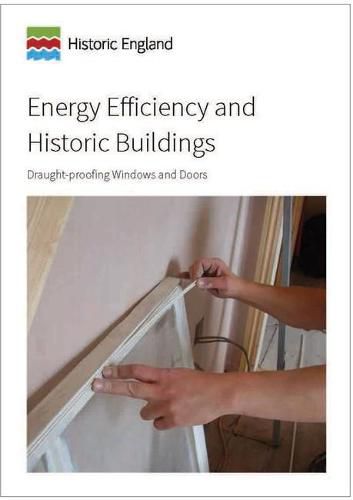Readings Newsletter
Become a Readings Member to make your shopping experience even easier.
Sign in or sign up for free!
You’re not far away from qualifying for FREE standard shipping within Australia
You’ve qualified for FREE standard shipping within Australia
The cart is loading…






This guidance note provides advice on the principles, risks, materials and methods for improving the thermal performance of existing windows and doors by draught-proofing. Draught-proofing is one of the most cost effective and least intrusive ways of improving the comfort of occupants and reducing energy used for heating with little or no change to a building’s appearance. It also has the added benefit of helping to reduce noise and keeping out dust. Research has shown draught-proofing can reduce air leakage from windows by between 33% and 50%, therefore significantly reducing the heating requirement needed for the room.
Historic windows and doors make a major contribution to the significance and character of historic buildings and areas so every effort should be made to retain them rather than replace them. Windows and doors can tell us a lot about the history of a building, changing architectural taste and style, social hierarchy, building economics, craft skills and technical advances.
Older buildings are prone to heat loss through cracks and gaps which develop as various building elements move and distort over a long period. This is often the case for windows and doors which can be a major source of heat loss. However, less than a quarter of the heat lost through a typical traditional window escapes by conduction through the glass, the rest is by draughts (air infiltration). Since draughts make people feel colder, the occupants often turn up the heating and run it for longer.
Windows and doors should be assessed for repairs before embarking on any draught-proofing measures. Traditional windows and doors can almost always be repaired, even if in very poor condition.
This guidance forms one of a series of thirteen guidance notes covering the thermal upgrading of building elements such as roofs, walls and floors.
$9.00 standard shipping within Australia
FREE standard shipping within Australia for orders over $100.00
Express & International shipping calculated at checkout
This guidance note provides advice on the principles, risks, materials and methods for improving the thermal performance of existing windows and doors by draught-proofing. Draught-proofing is one of the most cost effective and least intrusive ways of improving the comfort of occupants and reducing energy used for heating with little or no change to a building’s appearance. It also has the added benefit of helping to reduce noise and keeping out dust. Research has shown draught-proofing can reduce air leakage from windows by between 33% and 50%, therefore significantly reducing the heating requirement needed for the room.
Historic windows and doors make a major contribution to the significance and character of historic buildings and areas so every effort should be made to retain them rather than replace them. Windows and doors can tell us a lot about the history of a building, changing architectural taste and style, social hierarchy, building economics, craft skills and technical advances.
Older buildings are prone to heat loss through cracks and gaps which develop as various building elements move and distort over a long period. This is often the case for windows and doors which can be a major source of heat loss. However, less than a quarter of the heat lost through a typical traditional window escapes by conduction through the glass, the rest is by draughts (air infiltration). Since draughts make people feel colder, the occupants often turn up the heating and run it for longer.
Windows and doors should be assessed for repairs before embarking on any draught-proofing measures. Traditional windows and doors can almost always be repaired, even if in very poor condition.
This guidance forms one of a series of thirteen guidance notes covering the thermal upgrading of building elements such as roofs, walls and floors.